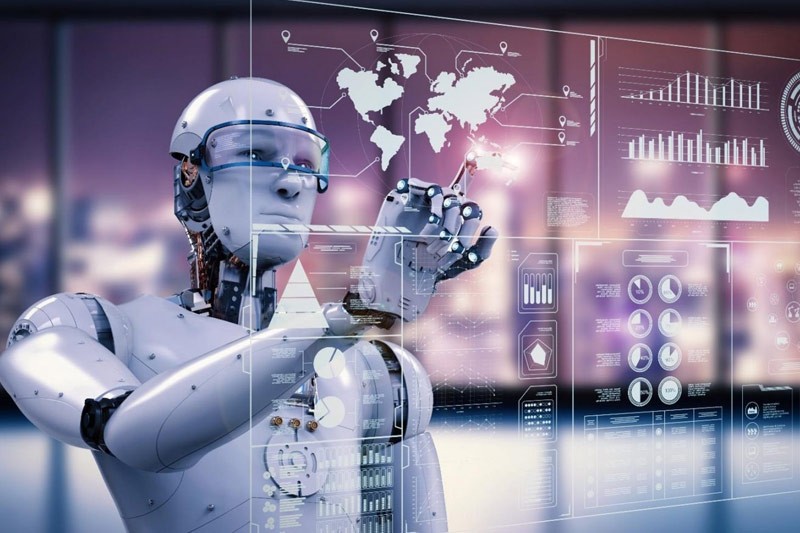Introduction: Artificial robots and human labor have transformed industries, economies, and societies, blurring boundaries and driving innovations. Their roles in manufacturing, medical labs, logistics, and research institutions are crucial for progress.
Automation: Redefining Efficiency
Artificial robots, with their precision, speed, and tireless execution of tasks, have revolutionized industries that were once heavily reliant on manual labor. In manufacturing, for instance, robots have elevated production rates while minimizing errors. This shift has allowed human workers to focus on tasks that demand creativity, adaptability, and critical thinking – traits that remain beyond the grasp of current AI capabilities.
The role of artificial robots in industries extends to hazardous environments as well. In scenarios where human safety is at stake, robots can undertake dangerous tasks, reducing the risks posed to human workers. This collaboration enhances overall efficiency while also addressing ethical concerns related to worker well-being.
The Human Touch: Unraveling Complex Challenges
While robots have proven their mettle in repetitive and structured tasks, the intricate nature of human interactions, emotions, and decision-making remains an area where human manpower shines. Industries such as healthcare, education, and creative arts depend heavily on the empathetic and nuanced approach that only humans can provide. A robot may excel in diagnosing medical conditions through pattern recognition, but it is the doctor’s compassion and communication that often play an equally vital role in the healing process.
Moreover, the blend of artificial robots and manpower can lead to ingenious solutions. Collaborations between scientists and AI systems in research settings expedite data analysis, experimentation, and hypothesis generation. This partnership accelerates discoveries and enables breakthroughs that might have otherwise remained elusive.
Synergy in Industry 4.0
The convergence of robotics and artificial intelligence, coupled with the rising demands of Industry 4.0, is propelling us into a future where the lines between robots and human workers continue to blur. Smart factories, powered by the Internet of Things (IoT), are leveraging the strengths of both entities. Robots handle repetitive assembly line tasks, while humans oversee and optimize operations, making real-time decisions based on data insights.
Challenges and Considerations
However promising this collaboration may be, challenges loom on the horizon. The fear of job displacement is a legitimate concern. As robots take over routine jobs, reskilling and upskilling of the workforce become paramount. Striking a balance between automation and preserving human expertise is crucial.
Ethical questions also arise. As robots become more advanced, questions about accountability, decision-making in critical scenarios, and the potential for bias in AI algorithms demand careful examination.
The Road Ahead: A Harmonious Coexistence
The roles of artificial robots and manpower are not a dichotomy but a symphony, where each note contributes to the overall melody of progress. Embracing automation and AI as tools that enhance human potential is the key to harnessing the power of this partnership. While robots excel in efficiency and precision, human creativity and emotional intelligence are irreplaceable.
In shaping the future, industries, policymakers, and society as a whole must collaborate to establish guidelines, regulations, and training programs that ensure a harmonious coexistence of robots and manpower. Only through deliberate efforts can we navigate the challenges, harness the opportunities, and ensure that this fusion of artificial and human capabilities takes us toward a brighter and more prosperous future.
Certainly! Here are five frequently asked questions (FAQs) related to the topic of the role of artificial robots and manpower:
1) What is the significance of the collaboration between artificial robots and human manpower in today’s industries?
The collaboration between artificial robots and human manpower is crucial for achieving optimal efficiency and productivity in various industries. Robots handle repetitive tasks with precision and speed, while human workers bring creativity, emotional intelligence, and adaptability to the table. This partnership leads to enhanced overall performance and innovation.
How do artificial robots and human workers complement each other in the realm of automation?
Artificial robots and human workers complement each other in automation by playing to their respective strengths. Robots excel in tasks that require repetition and consistency, freeing up human workers to focus on complex decision-making, creativity, and interpersonal interactions. This division of labor leads to a balanced and efficient workflow.
2) What challenges arise from the integration of artificial robots into the workforce, particularly concerning job displacement?
One of the main challenges of integrating artificial robots into the workforce is the concern of job displacement. As robots take over routine tasks, there is a fear of human workers losing their jobs. To address this, reskilling and upskilling programs are essential to equip workers with new skills that align with the changing job landscape.
3) How can industries ensure the ethical use of artificial robots, especially in critical decision-making scenarios?
Ensuring the ethical use of artificial robots, especially in scenarios where critical decisions are involved, requires robust guidelines and oversight. Industries need to develop transparent AI algorithms, establish accountability mechanisms, and ensure that human oversight remains integral in decision-making processes to prevent unintended consequences.
4) What does the future hold for the collaboration between artificial robots and human manpower?
The future of this collaboration is marked by continuous innovation and integration. As technology advances, robots are expected to become more sophisticated and capable of handling complex tasks. Human workers, on the other hand, will increasingly focus on tasks that require emotional intelligence, creativity, and adaptability. Striking a balance between the roles of robots and humans will be crucial for achieving harmonious coexistence and maximizing their combined potential.


